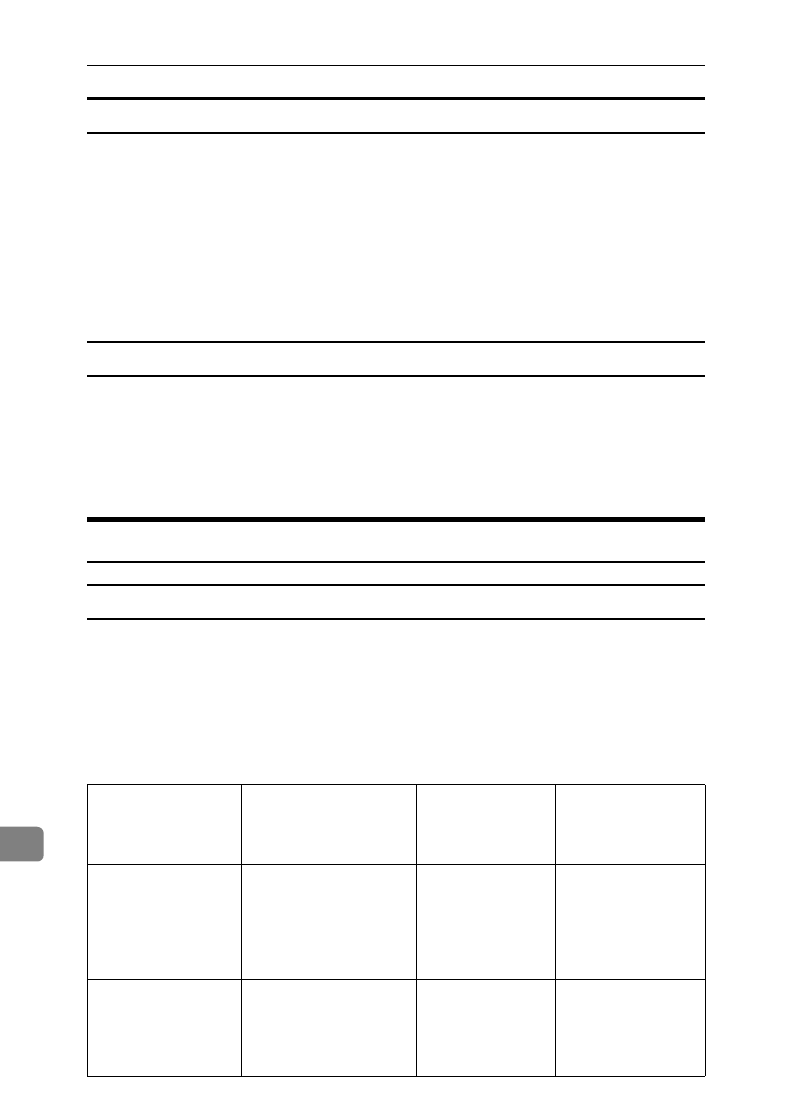
Appendix
118
11
Document Feeder Requirements
• Do not insert torn, heavily curled, wavy, creased, dog-eared, damp, or other-
wise damaged documents. Make copies of these originals and scan the copies.
• Do not insert folded, stapled, clipped, glued, or taped documents, or docu-
ments with a metallic coating. Make copies of these originals and scan the
copies.
• Do not insert documents on which there is undried ink or correction fluid.
Wait for the document to dry.
• If the document has an uneven or slanted edge, do not insert that edge in first.
Paper Requirements
• Do not print to torn, heavily curled, wavy, creased, dog-eared, damp, or oth-
erwise damaged paper.
• Do not print to folded, stapled, clipped, glued, or taped paper.
• Do not print to paper with any kind of coating or printing. Do not print to me-
tallic paper. Do not print to the reverse side of a print.
Energy Saving
Introduction
When your fax machine prints fax messages, it uses heat to fix the image to the
paper. This heat is generated using a heating roller which must be hot enough to
fuse toner to the paper properly. Because keeping the roller hot all the time con-
sumes electricity, this machine is provided with an Energy Saving mode in
which the heating roller is heated to full temperature only when a message
needs to be printed.
The two available types of Energy Saving mode shown in the table below.
Energy Saving mode Machine status in Energy
Saving mode
How long before
you can print after
exiting Energy Sav-
ing mode
Power consumption
in Energy Saving
Mode
Fax Standby (Heater
On)
Display turns off . The
machine maintains the
heating roller tempera-
ture at half the full tem-
perature; warm up takes
less time.
Within about 30s 25W
Energy Saving Stand-
by (Heater Off)
Display turns off . The
machine lets the heating
roller cool to room tem-
perature; warm-up takes
longer.
Within about 40s 2W


















